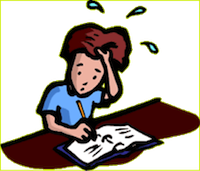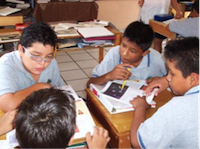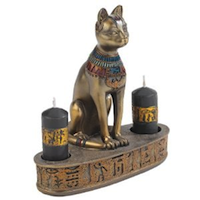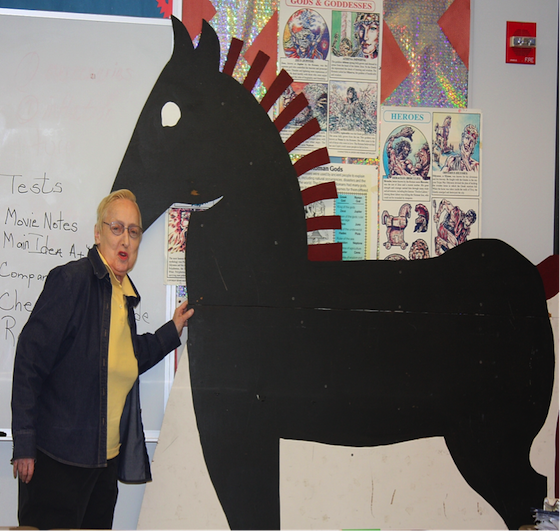Mid-Year Struggles: Assessment
A MIddleWeb Blog
In my previous post, I shared ideas about coping with the organizational challenges that build up for some students by the middle of the school year. This week it’s is all about assessment.
The assessment piece can be daunting for kids and for teachers as we try to determine how best to measure if they are mastering the concepts we’ve been teaching. Students who receive special education services as well as those ‘shades-of-gray’ kids who struggle with mastering concepts but aren’t identified as having learning disabilities (or speak another language at home) frequently do poorly on paper and pencil tests and quizzes.
So, what can we do both to prepare them for these types of assessments and to create ‘alternate assessments’ (a term found on many IEPs) when needed?
Preparing kids before the actual test
Many students struggle with working memory (your brain’s post-it notes, one expert calls it) which deeply impacts their ability to take information and apply it. This is very evident on tasks such as unit tests, which require students to demonstrate what they have learned over a period of 2-3 weeks. In addition, solving multi-step problems in math utilizing algorithms can be difficult. So, what can we do as both general education and special education teachers to prepare our students for these challenges?

What is so beneficial for students — particularly those on IEPs — is that during our state’s standardized math test in the spring, students are allowed to use “math reference sheets” as long as they are approved prior to the test. In addition, during my academic support class, we discuss the best use of this “prime real estate” so kids utilize the space on their cards efficiently. We then do practice problems referring back to their cards for help.
I also write the steps on the board when they come to my room during the test with samples to refer to if needed. Example: changing a fraction into a decimal and then a percent.
Round and round
For science, my co-teaching partner Suzanna does a variety of practice activities to prepare the kids. Here are two examples.
“Find your partner”– In this review activity, kids have either a vocabulary term or the matching definition. They love moving around searching for their partner, then stand side by side as they read aloud to the class in a semi-circle of pairings. She also gives the kids a practice test, similar to the one they’ll be taking, then uses it as a study guide once they self-correct.

In ELA, my teaching partner Paul also uses rotating stations. He will have one group complete a crossword puzzle based on the characters, vocabulary, setting, etc. from a novel they’ve read. Another group may draw a picture of a character with something they’ve said, the clothes they might have worn, a description of their physical characteristics, etc.
Paul’s third station is a “Stump the Experts” activity in which kids must come up with questions from their study guides and novels and try to stump the two of us. If we can’t answer the question they receive extra points on their test. They are very engaged!
Assessments that aren’t traditional

In Ancient History, Pauline has the kids create weekly trivia questions (and answers) using material she has previously taught. As the year goes on, the number of questions she requires increases: 5 during term 1, 10 during term 2 and so on. She gives extra points if they have exceeded the minimum number and kind of questions required. Pauline does this each Friday with a student scorer who keeps a running tally of the # of questions written. (This year’s group is highly competitive, and they often try to beat one another with extra questions.) We have a Final Trivia Match before the winter break and at the end of the year, with trophies and plaques for the top three winners.
Pauline’s well-developed strategy is a wonderful and motivating way to engage right-brain learners who are strong in auditory processing, as well as providing weekly reviews for upcoming traditional assessments. In addition, she uses maps that they complete in groups, and 3D models or “projects” that they make related to units of study. During Project Day, they share their project, explain how they made it and relate five interesting facts about it.
Above is a picture of Pauline and one of her students’ 3D Projects, “The Trojan Horse.” The list behind her on the board reveals some of the different ways she assesses our students, which will become part of their portfolio for the term.
So, do all kids succeed on these assessments? No, but we have provided numerous opportunities to have them demonstrate their knowledge and understanding. We also allow retakes on tests and quizzes, provide after-school help to reteach concepts, and post their names on our IOU boards when assignments aren’t passed in on time. Nagging also works!





































